At the end of a recent professional training, I had a rather candid conversation with an assistant principal. He was frustrated with his school’s sole focus on enhancing academic rigor at the cost of compassion toward students. By only valuing student achievement, he said, his school was doing a disservice to students, making them stressed and unhappy, and killing off their motivation to learn.
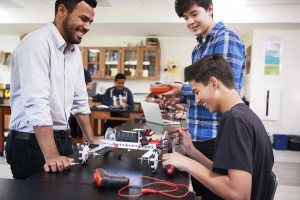
His complaint is a common one among educators and school leaders. We are often asked to make choices between strengthening social-emotional learning (SEL) skills and growing academic skills in our students. But this is a false dichotomy. The skills that students need to learn are the very skills that SEL provides—things like reflection, perseverance, and focus. The question isn’t whether we can or should teach these skills, but how to do it, especially when we’re already swamped trying to meet our academic goals.
In my new book, SEL Every Day, I provide an answer to that question. Luckily, SEL need not be separate from academics or an instructional add-on, but an integral part of quality teaching and learning. With a few keys in mind, teachers can easily incorporate it into everyday instruction, benefitting both the classroom environment and student motivation to learn.
Here are three keys for integrating SEL into any classroom.
1. Make lesson plans with SEL in mind, right from the start
Teachers are, at their core, designers, and we design one of the most important things in the world—learning experiences. The number-one factor influencing success is the time and care put into designing the unit, lesson, meeting agenda, or professional learning experience. It’s vital to plan with SEL in mind and to integrate it explicitly into lessons.
There are many ways to do this, but here are a few that come from my own experience and are supported by research.
Use SEL signature practices in your lesson plans. There are three practices developed by CASEL professional development consultant Ann McKay Bryson that are widely used among classroom teachers to enhance community while also promoting academic engagement.
- Welcoming rituals like morning meetings or an interactive “do-now” build community and set the stage for the learning that’s about to happen. This practice also brings all the voices into the room, and when you have students talking at the start of class, they are more likely to stay engaged throughout.
- Engaging strategies like “turn to your partner,” “Socratic Seminar,” and “Jigsaw” are infused with SEL, vary in complexity, and consist of sequential steps facilitated by the teacher to support learning individually and collectively.
- Optimistic closures like an “Appreciation, Apology, or Aha” aren’t meant to be sanguine ways to end class. Rather, they provide an opportunity to reflect on what happened in class, share a next step, express gratitude, or lift up new understanding.
Create shared SEL learning targets. Early on in my teaching practice, an instructional coach helped me see how crucial it was to have shared learning targets in student-friendly language, using “I can” statements so students were clear on what they would learn. What took my teaching to the next level was co-constructing those learning targets with my students, shifting the language from “I” to “we.” By co-creating goals with—rather than imposing goals on—our students, we give them a sense of how we as a class will support each other’s learning and be responsible for contributing to each other’s success. (Here are examples of SEL learning targets.)
Incorporate both social and instructional teaching practices that promote SEL. Researcher Nick Yoder has identified 10 teaching practices that promote SEL, including practices like showing “warmth and support” (which lets students know their teacher cares) and teaching students to work effectively together toward a collective instructional goal. In my book, I offer deeper dives into some of those high-impact teaching practices that can be used across grade level and content areas to develop SEL skills and support academic learning in secondary classrooms.
2. Develop your own SEL practice
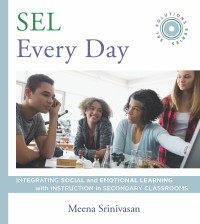 This essay is adapted from SEL Every Day: Integrating Social and Emotional Learning with Instruction in Secondary Classrooms (W. W. Norton & Company, 2019, 192 pages)
This essay is adapted from SEL Every Day: Integrating Social and Emotional Learning with Instruction in Secondary Classrooms (W. W. Norton & Company, 2019, 192 pages)
We teachers can’t expect our students to practice SEL if we don’t, too. We need to be aware of ourselves—our emotions, thoughts, reactions, values, and beliefs—and use that knowledge to improve teaching and create powerful learning environments. Having a strong adult SEL practice where we welcome diverse perspectives, manage strong emotions, and practice compassion towards ourselves and others can help us make better decisions in service of our students, because we are less reactive toward them and can strengthen our relationships with them, too.
Research confirms that teachers who were mandated to teach SEL but didn’t cultivate their own practice actually worsened their students’ SEL skills. In contrast, teachers who developed SEL skills not only improved their own well-being but improved the academic learning and social-emotional development of their students.
We can grow and deepen our own SEL practice by reflecting on guiding questions as we develop our curriculum. Some examples include:
- What beliefs do I have about my students that may be impacting my instruction or lesson design? How do these beliefs help or hinder my students and myself? (self-awareness)
- How can this lesson affirm the identities of the students in my class? How am I incorporating a counter-narrative? (social awareness)
- How will I strengthen my relationship skills with my students, or their relationships with one another, through this lesson? What specific actions can I take? (relationship skills)
- How will I practice self-management and be transparent about how I’m practicing it during this lesson? (self-management)
By answering these for ourselves, we deepen our understanding of how our own SEL can benefit students and strengthen our lessons. (Here is an SEL integrated lesson plan template.)
3. Start small, build consistency, and evaluate outcomes
At first glance, teaching with SEL in mind may seem like a daunting task. But you can begin by taking small steps, choosing just one idea to incorporate into your teaching practice. That can make it easier to build up an integrated SEL curriculum over time.
The key is to make sure that whatever you choose to do—whether it’s using an optimistic closure or giving students “brain breaks”—is done consistently. Offering small practices consistently helps build community and a culture of connection and commitment rather than compliance.
Teacher reflection and student feedback are essential to evaluating the outcomes of your lessons and can improve learning. That’s why I encourage teachers to build in opportunities for students to offer feedback. (Here is my own reflection form.)
Making time for this was hard for me; but I made it part of my prep period and lesson planning process. I would also begin classes by sharing my own thoughts about students’ feedback and providing evidence of what they learned in the previous class. Whenever possible, I also named how today’s lesson was going to lift up their input and learning from the class before.
The effort it takes to be more intentional about teaching with SEL in mind is worth it. When teachers prioritize SEL, their classes are better managed and they experience less stress and burnout. That’s why focusing on SEL is a win-win for students and teachers. The key here is integrating SEL into what you are already doing. That way, it won’t feel like an extra burden, but a lift to your teaching day.
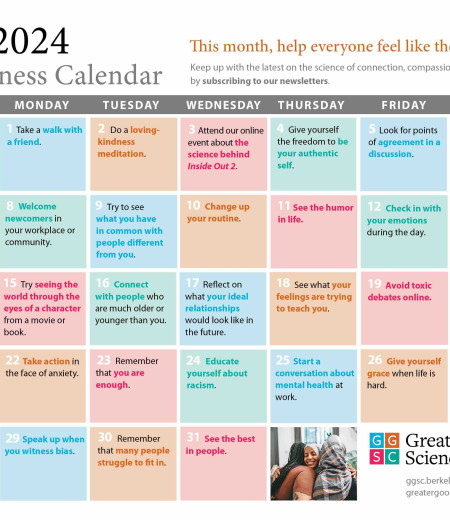

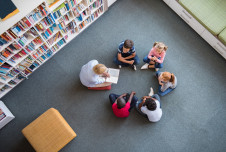
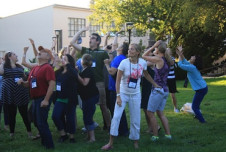
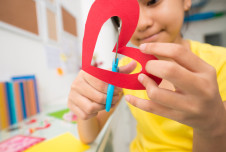


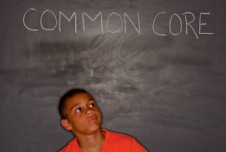
Comments